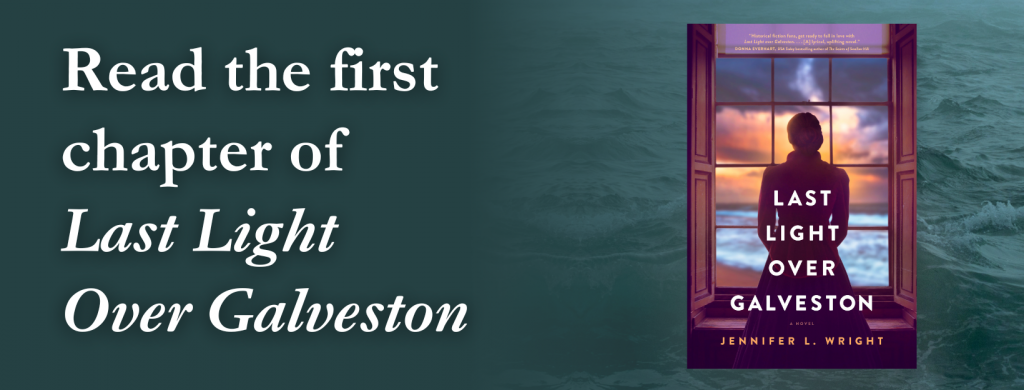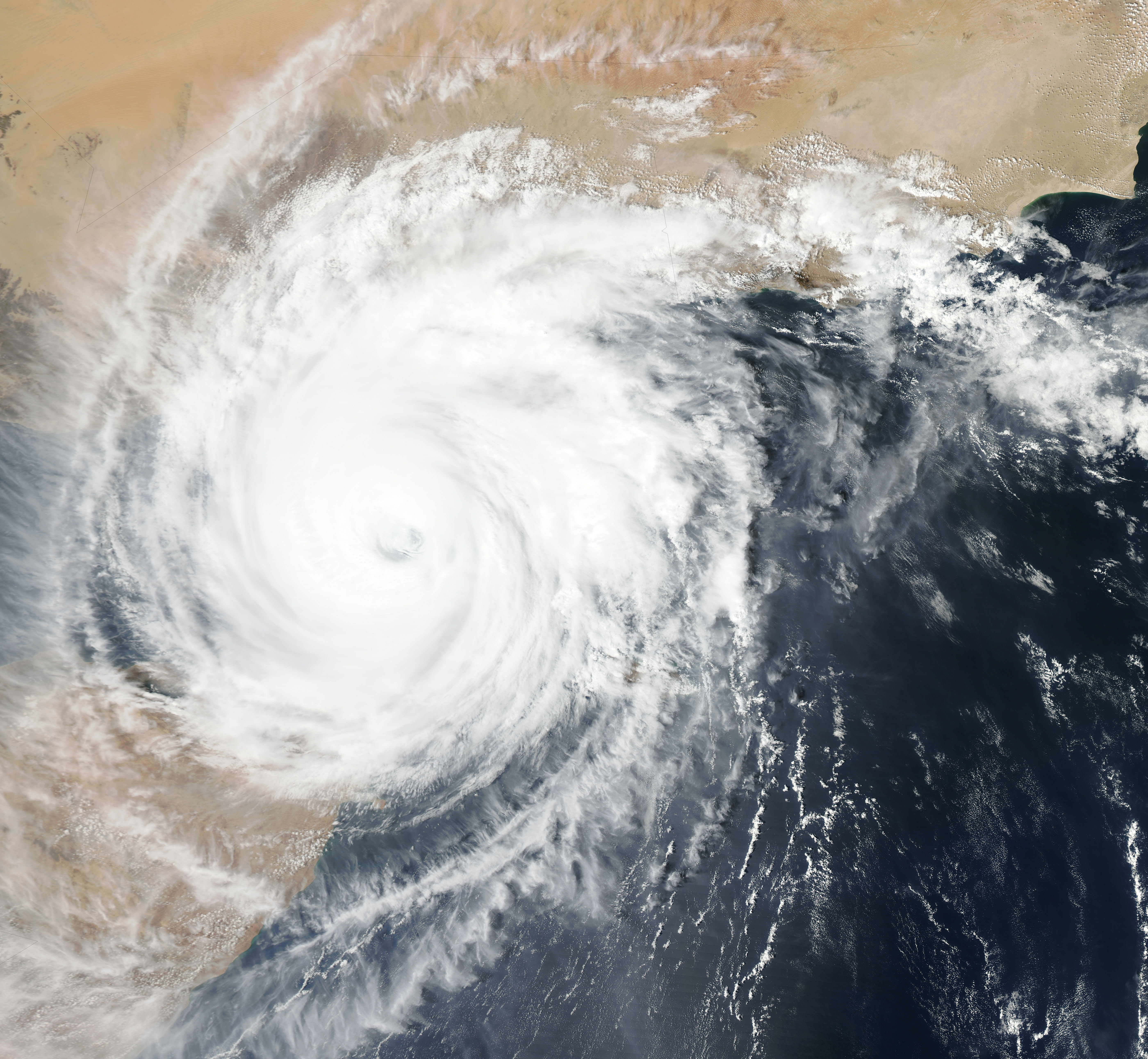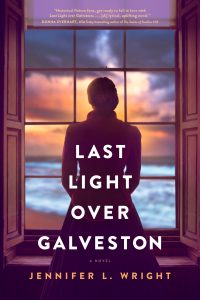Jennifer L. Wright’s latest historical novel, Last Light Over Galveston, is set during the Great Galveston Hurricane of 1900, but as she details in this guest post, writing about a historical natural disaster isn’t as easy as some might think.
In the story, Kathleen thinks she has found sanctuary from her former life at an orphanage on Galveston Island. But when her past starts to creep into the new life she’s created for herself and a storm starts brewing, Kathleen must reach for a strength beyond her own if she—and those she loves—are to survive.
Keep reading to hear about Jennifer’s research, how she came up with the idea, and how real stories helped shape the novel.
If you want to learn more about Jennifer’s historical novel, start reading the first chapter of Last Light Over Galveston, or find your own copy in softcover, e-book, or audiobook at a retailer near you.
From the first time I heard about the Great Galveston Hurricane of 1900, I was fascinated by it.
I’ve always been a little bit of a weather nerd. Storms both captivated and terrified me and, growing up in the Midwest, I often ran outside, eyes to the sky, rather than indoors as my mother commanded at the first sound of a tornado siren. Books about weather were my own personal bread and butter. I checked out one of them—Night of the Twisters by Ivy Ruckman—from my school library so often, the librarian eventually just gave it to me. So, really, the writing of Last Light Over Galveston, my own “storm story,” was a way of coming full circle. Maybe some other weather-obsessed girl will obsessively check this book out of the library, nourishing both her curiosity and her imagination as so many weather books once did for me.
But, as I embarked on writing it, I soon discovered that reading about natural disasters and writing about them are two very different things. Although I worked very hard to get the details of the storm just right—the timing, the storm surge, the wind speeds—I became increasingly aware of the human toll of the hurricane. Although final numbers vary greatly, owing to both the severe nature of the storm as well as the lack of sufficient records, the Galveston storm remains the nation’s deadliest natural disaster. Some estimates place the death toll at upwards of 10,000 lives lost to the waves.
I was very aware that, while I was writing a fictional story, both the storm and its victims were extremely real. This was a fact made all the more sobering when my family and I visited the 1900 Storm exhibit at Galveston’s Rosenberg Library and discovered, among the list of known fatalities, a “Jennie Wright” and a “Johnnie Wright”—variations of both my husband’s and my first names.
Although over a century removed from the storm, the devastation became deeply personal to me. The human cost far outweighed the economic one, however great, and I felt the weight of the victims deeply as I sought to honor their memories through my words.
But it wasn’t just the deceased who affected my writing. It was also the survivors. Survivors like Yetta Gordon, who endured the storm by climbing into a packing crate, which was already occupied by a frightened dog, floating all night while dodging debris and being pushed along by the wind.
Or like Mrs. William Nelson, who had her infant son Frank ripped from her arms by the storm as she sought shelter in a neighbor’s house. All night long, Mrs. Nelson fretted and mourned for her baby, even as she fought for her own life among the rising waters. The next day, however, another neighbor arrived at what remained of Mrs. Nelson’s shelter, with baby Frank, unharmed, in his arms.
It was stories like these, meticulously recorded and preserved by institutions such as the Galveston and Texas History Center, that I kept at the forefront of my mind as I wove my tale. While not discounting or downplaying the unimaginable horrors and loss suffered by so many, I was moved by account after account of survival against all odds. Of strength, of courage, and the will to carry on.
Of unexplainable grace and bring-you-to-your-knees miracles.
The Galveston hurricane was a disaster of unprecedented destruction and casualties. But it was also a lesson in hope and rebirth, with both the city and its people rising from the ruins. Although fictional, it is my hope that Last Light Over Galveston will serve as both a memorial to those lives lost as well as a testament to those who refused to let the storm define their lives.

Last Light Over Galveston by Jennifer L. Wright
Galveston, Texas. September 1900. Only months ago, Kathleen McDaniel returned from finishing school in Switzerland to her family home in New York’s Hudson Valley with a future of promise and privilege set before her. But one horrific event shattered her picturesque life. Now she has fled as far as the train line and a pocketful of money would take her, finding refuge at the St. Mary’s Orphan Asylum on Galveston Island, where she helps the nuns care for their young charges and prays her past will not find her. Despite her tenuous standing at the orphanage—and the grief and betrayal that drove her from home—Kathleen slowly begins to make friends. There is Emily, the novice nun she rooms with; Maggie, the tempestuous young girl who only bonds with Kathleen; and Matthew, a kind, handsome man recently employed by Isaac Cline at Galveston’s office of the US Weather Bureau.
Then in one fateful day, Kathleen’s fragile new life begins to crack as it becomes clear that she can’t run far enough to escape the reach of her former life. Meanwhile, as troubling news about a storm crossing the Gulf from Cuba swirls in the Weather Bureau offices, Matthew holds fast to Cline’s belief that no hurricane can touch Galveston. But as darkness falls on the island, Kathleen must gather her courage and reach for a strength beyond her own if she—and those she loves—are to survive.

Jennifer L. Wright grew up wanting to work for Dateline and become the next Jane Pauley, but it took only a few short months of working as a reporter in both print and radio journalism for her to abandon those aspirations for the greener pasture of fiction writing. She loves to reimagine and explore forgotten eras in history, showcasing God’s light amidst humanity’s darkest days. Her books, which include If It Rains, Come Down Somewhere, and The Girl from the Papers, have been nominated for both a Carol Award and a Golden Scroll Award.
She currently lives in New Mexico with her husband, two children, and an ever-growing collection of pets. While she enjoys writing, her true dream is to one day own and operate a guinea pig farm. If you want to connect with her (and can handle a barrage of pictures of her animals), you can find her on Facebook at @JenniferWrightLit, on Instagram at @jennwright82, or by visiting her website, jenniferlwright.com.



